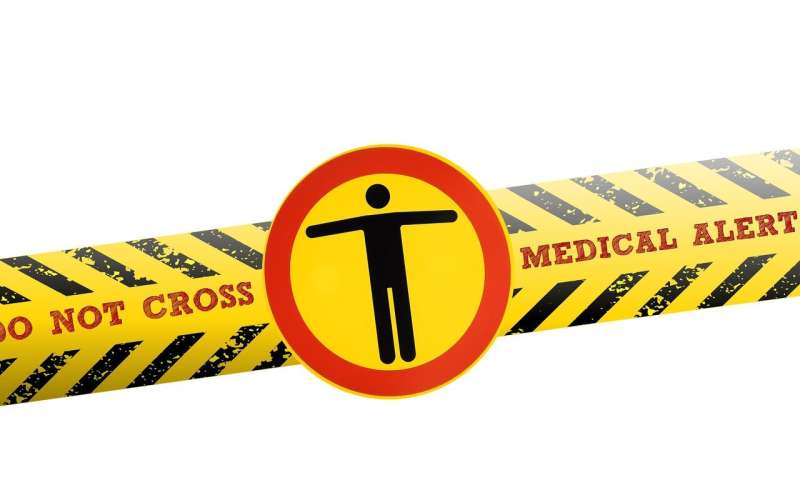Credit: CC0 Public Domain
When the novel coronavirus began to circulate globally at the beginning of March, scientists turned to statistical models to predict the severity of the pandemic. The news was stark.
The epidemiological models showed that COVID-19 could infect hundreds of millions of people and kill millions worldwide, prompting governments to enter lockdown in a bid to avoid the worst.
Now, as much of Europe gingerly exits confinement, questions are being asked about the methods used and the results produced in the calculations that shocked authorities into taking unprecedented measures to enforce social distancing.
"We gave far too much weight to the models," Jean-Francois Toussaint, director of France's Irmes medical research centre told AFP.
"These mathematical models depend on too many factors to be accurate," he said.
Toussaint said that with COVID-19 a heretofore unknown disease, there were many variables in the models that could drastically affect their outcomes.
"The most egregious case was (the prediction) of 500,000 deaths that forced governments' hands. It's a typical example of a not very serious application of science," said Laurent Toubiana, an epidemiologist who has spoken against lockdowns.
He was referring to a model by researchers at London's Imperial College, released on March 16, which showed that without any action, COVID-19 could kill 510,000 people in Britain and 2.2 million in the United States.
The study, led by epidemiologist Neil Ferguson, prompted Prime Minister Boris Johnson to enforce strict social distancing measures in the days that followed.
"We always prefer to listen to the alarmists," said Toubiana, pointing out that the death toll from COVID-19 is currently at least one order of magnitude lower than what Ferguson and colleagues' model showed.
The authors at the time did point out that their model did not take into account changes in behaviour such as social distancing, hand washing and mask wearing, all of which have proved successful in reducing COVID-19's spread.
'Models aren't absolute'
The model immediately came in for criticism for its methodology, but the university has stood by the research, saying this month that it had passed an evaluation by independent experts.
On Monday a new Imperial study concluded that lockdowns had prevented 3.1 million COVID-19 deaths across 11 European nations.
Toussaint claimed Imperial was "trying to retrospectively justify its mistakes".
Whereas Imperial's initial study was released directly by the university, Monday's appeared in the prestigious journal Nature and had been subjected to review by a host of the researchers' peers.
Modellers themselves are keen to stress that they don't have crystal balls: they simply use maths to simulate various outcomes—and in doing so may confront decision makers with the worst case scenario they may wish to avoid.
"A model doesn't have to be interpreted as absolute: it's a snapshot that rests on what we know at the time," said Nicolas Hoertel, a psychiatrist and modeller at the Corentin-Celton hospital near Paris.
"It's a bit like an opinion poll," he told AFP.
"There are major limits (to models) but at this stage they are the only scientific tool we have to inform decisions regarding public health," Hoertel said.
A recent model in France showed that lockdown had saved 100,000 lives, but policymakers have said models were not the only reason the country entered radical social distancing in March.
"Of course we relied heavily on models... one for example said that without confinement we were going to have 120,000 or 150,000 deaths," Jean-Francois Delfraissy, president of France's scientific council advising the government on COVID-19, told French television this month.
"But models are only models," he said, adding that on-the-ground observations from the massive influx of patients to hospitals also guided the government.
Ultimately, "it's a political decision," Delfraissy said.
© 2020 AFP
























